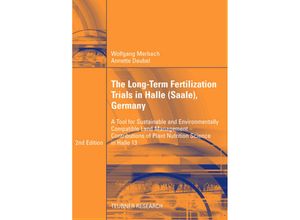The soils of our planet in enabling and sustaining plant growth provide the basis of human
existence as about 98 % of all foodstuff is primarily produced by t- restrial ecosystems. As a
consequence of erosion desertification and the dev- opment of buildings roads industrial
estates etc the utilizable soil surface area of the world is now decreasing by about 10
million ha annually a loss which is occurring concurrently with a rapid increase of world
population which is - pected to reach 8. 5 billion people by the year 2020. A diminishing soil
area has thus to satisfy an ever increasing population. The human race is therefore faced with
the major challenge of ensuring substantial and rising increases in plant production per unit
land area worldwide but with lower resource inputs and the need for long-term preservation of
soil fertility under uncertain and possibly strongly changing climatic conditions on a global
scale. Scientifically sound recommendations for agricultural and environmental policies are
expected from research work. These require well-founded knowledge about the reaction of soils
and agroecosystems towards different cultivation and fertilization practices as well as towards
climatic factors. Such knowledge can only be obtained by long-term investigations as the
effects of human activity as well as of non-anthropogenic factors occur very gradually because
of the buffer capacity of the ecosystems and they are often quantifiable only in the fullness
of time.



